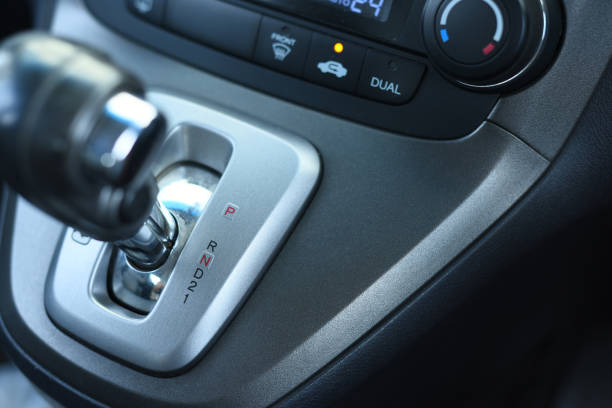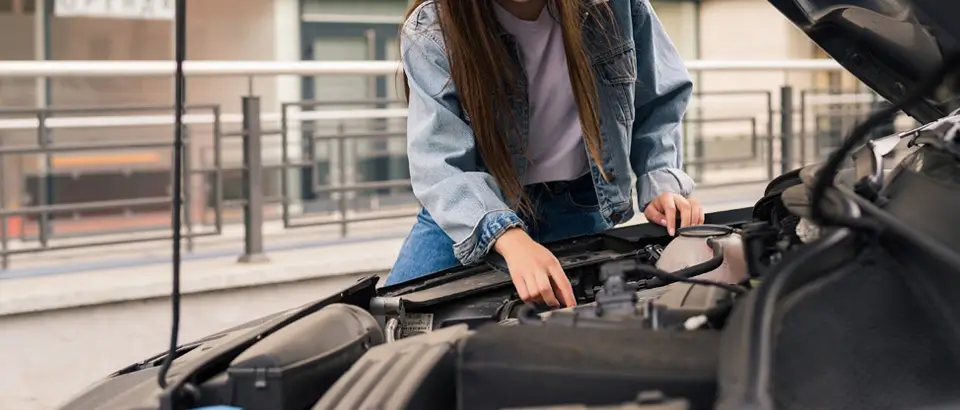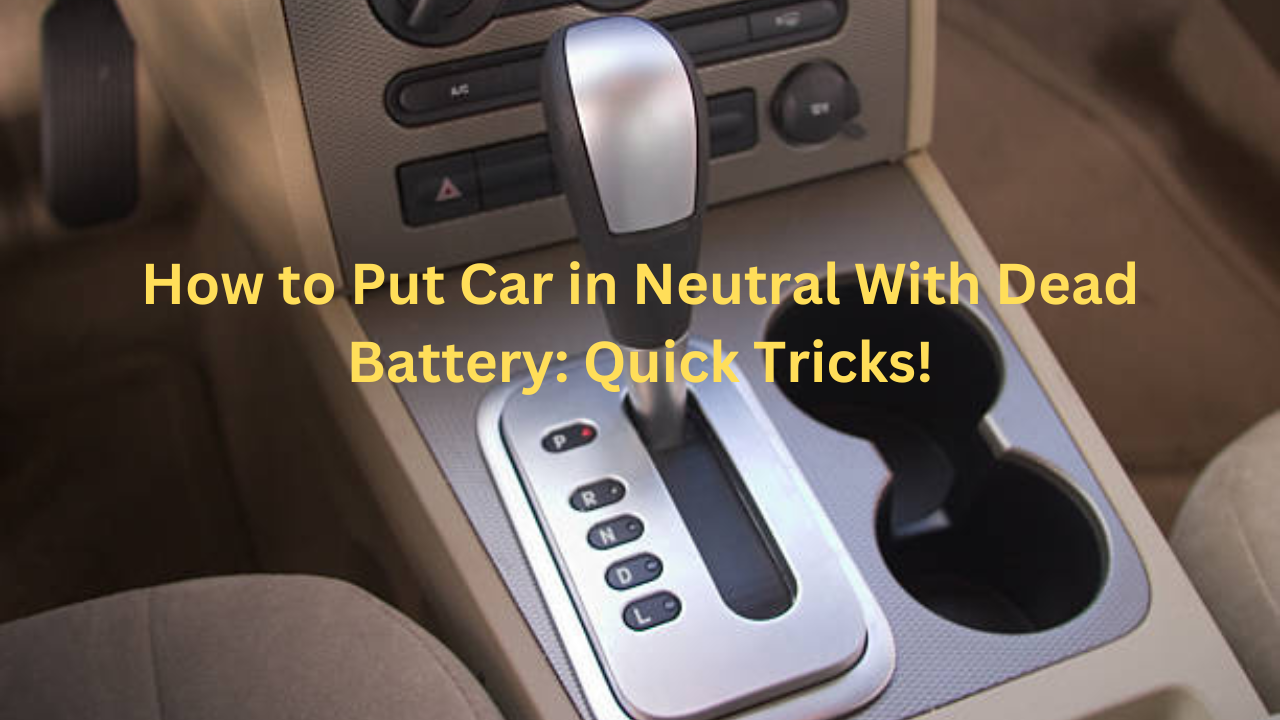How to put car in neutral with dead battery, locate the shift lock override. This feature allows you to shift gears without power.
Dealing with a dead car battery problems can arise, particularly if you need to move your vehicle. Being able to shift your car into neutral is crucial for towing or pushing the car to a more suitable location for a jump-start or battery replacement.
Modern vehicles are generally equipped with an automatic transmission that requires electrical power to operate. The shift lock override, usually found near the gear selector, is a fail-safe feature designed to help in these situations.
This mechanism bypasses the need for electrical power to change gears. Understanding this feature can be a lifesaver if you are stuck with a dead battery and need to relocate your vehicle safely.
Introduction To Shift Lock Release
Welcome to the ‘Introduction to Shift Lock Release’ – your guide out of a tricky situation. Imagine a dead battery when you need to move your car. It’s possible with the shift lock release. Learn the magic behind this mechanism. Let’s unlock the mystery.
The Role Of Battery In Gear Shifting
The battery does more than start the car. It powers the electronic system for shifting gears. Without power, the shift lever gets locked. It can leave you stuck. But there’s a workaround.
- Power to the system: Battery energy lets you change gears.
- Electronic signals: These tell the car to shift gears.
- Locked without power: No battery, no gear shift.
Understanding Shift Lock Mechanism
Shift lock is a car’s safety feature. It prevents shifting without the key in the ignition and the foot on the brake. A dead battery can engage this lock unintentionally.
- Insert key: Normally, the key unlocks this feature.
- Press brake: This also helps disengage the lock.
- Dead battery effect: It means no shift, even with the key.
To bypass the shift lock, make use of the release mechanism. It’s usually a small cover near the gear selector. Remove the cover and press the button underneath. This manually frees the gear lever. You can now shift to neutral, even with a dead battery.
| Step | Action | Result |
|---|---|---|
| 1 | Find shift lock override | Access manual control |
| 2 | Press override button | Gear shift released |
| 3 | Move gear to neutral | Car can roll freely |
Preparing For Manual Override
At times, your car battery might just give up on you, leaving the vehicle immobile. In situations like these, knowing how to shift your car into neutral is crucial. This can help move it to a safer location or prepare it for a jump-start. Let’s walk through the steps to manually override the automatic transmission lock when your battery is dead.
Safety First: Parking Brakes And Flat Surfaces
Before attempting any manual override, guarantee your own safety and that of your vehicle. Engaging the parking brake ensures the car won’t roll unexpectedly which is essential for manual cars.
- Engage the parking brake by pulling up the handle or pressing the pedal.
- Ensure the car rests on a flat and stable surface to prevent any movement.
Once secured, you can move forward with the next steps confidently.
Gathering Necessary Tools
Your car’s manual mode will require some tools to activate. Be ready with the right tools on hand. This usually includes:
| Tool | Usage |
|---|---|
| Screwdriver or trim tool | Remove trim pieces |
| Pliers or vice grips | Adjust cables if necessary |
| Owner’s manual | Instructions for gear override |
Some models might need a specialized tool found in your vehicle’s toolkit. Check the owner’s manual for exact details on your car model.

Accessing The Shift Lock Override
Accessing the Shift Lock Override becomes crucial when you need to move a car with a dead battery. This function allows you to shift the car into neutral even when the electrical systems are unresponsive. Let’s walk through the steps to find and activate the override system so you can safely move your vehicle.
Locating The Override Slot Or Access Point
Begin by checking your car’s manual for specific instructions. Most cars have the override slot located near the shifter. It could be enclosed with a little plastic lid or a trim. Spotting this access point is your first step towards moving your car to neutral without power.
Using A Screwdriver Or Similar Tool
Once you discover the override slot, you’ll need a screwdriver or a similar tool to engage the mechanism. Flathead screwdrivers usually work best. Insert the tool into the slot and push down firmly. This action will release the shift lock, allowing you to move the shifter into the neutral position. Ensure the car is on a level surface to prevent it from rolling unexpectedly.
Remember, safety first! Secure the vehicle with wheel chocks or have someone assist you to ensure that the car does not roll once it’s in neutral. With these steps, you can navigate this situation quickly and safely.
Executing The Neutral Shift
An unexpected dead battery can stop you in your tracks. But sometimes, you must move your vehicle even with no power. Shifting to neutral is key. Let me guide you through ‘Executing the Neutral Shift’ seamlessly.
Depressing The Override Button
Car transporting with a dead battery starts with an override button. These are the steps to find and use it:
Look for the button: It’s usually near the shifter or in a small panel.
Press the button: Use a screwdriver or key if it’s recessed.
Hold the button: This disengages the lock, preventing shifts without power.
Shifting The Gear To Neutral
With the override engaged, it’s time to shift gears:
- Foot on brake: Keep it down to avoid any movement.
- Shift to neutral: Move the gear to ‘N’ while pressing the override.
- Ready to move: Your car can now roll freely for repositioning or towing.
After Putting The Car In Neutral
Successfully shifting your vehicle into neutral with a dead battery is a relief, but the job isn’t over yet. It’s crucial to stabilize your car to prevent any unintended movement. With your car in neutral, you can now focus on safety and prevention strategies for the future.
Securing The Vehicle Post-shift
Once the vehicle is in neutral, immediate steps to ensure safety are essential. Here’s how to secure your car:
- Engage the parking brake to reduce the risk of your car rolling.
- Use wheel chocks on a downhill or uphill slope for extra stability.
- Signal for assistance, whether it’s calling for a tow truck or alerting nearby drivers.
- Place reflective triangles behind and in front of the car if available.
Always remember, safety comes first. These measures ensure you and your vehicle stay safe until professional help or a battery jump can be arranged.
Future Precautions To Avoid Similar Situations
Prevention is better than cure. To avoid future inconveniences, consider these tips:
| Precaution | Benefit |
|---|---|
| Regular battery checks | Ensures reliability and detects early signs of battery failure. |
| Carry a portable charger | Provides a quick fix in case of battery issues. |
| Vehicle maintenance | Prevents unexpected breakdowns. |
| Knowledge of manual override | Equips you to handle similar situations smoothly. |
Staying proactive with your car maintenance discourages unwanted surprises. Maintain a routine checkup for your car and never ignore warning signals from the vehicle. This routine will make your journeys smoother and stress-free.

Credit: swifttyrespecialist.sg
Alternatives And Tips
Facing a dead battery in your car can be stressful. But you’re not out of options. Even when your vehicle refuses to start, several methods allow you to safely put your car into neutral. Let’s explore some practical alternatives and helpful tips to tackle this challenge without a hiccup.
Jumpstarting The Battery
Jumpstarting is a quick way to revive a dead battery. It’s simple:
- Get jumper cables and a functioning vehicle
- Connect the cables correctly – positive to positive, negative to ground
- Start the working car, then try starting your own
- If the car starts, let it run to recharge the battery
Note: Always follow your vehicle’s manual for specific jumpstarting instructions. Ill-suited connections can cause damage.
Towing As A Last Resort
If all else fails, towing is the secure choice. Here’s what to consider:
- Call a professional tow service
- Inform them of your car’s condition
- Ensure the vehicle is towed safely to a nearby mechanic
Opt for a flatbed tow truck to avoid damaging your car.
Regular Maintenance To Prevent Battery Issues
Regular checks are vital for a healthy battery. Stick to these habits:
- Test your battery every six months
- Keep terminals clean from corrosion
- Ensure the battery is securely fastened
- Drive regularly to maintain charge
Tip: Store a portable charger in your car for emergencies.
How to put car in neutral with dead battery automatic
If your car has a dead battery and you need to put it in neutral, follow these general steps. Keep in mind that the specific details may differ based on your car’s make and model. Therefore, it’s always a good idea to consult your vehicle’s owner’s manual for accurate instructions.
Locate the Shift Lock Override Slot:
Many automatic transmissions have a shift lock override mechanism that allows you to shift the transmission manually. Look for a small cover or slot near the gear selector labeled “Shift Lock,” “Shift Lock Override,” or something similar.
Remove the Cover or Access Panel:
Use a small flathead screwdriver or a key to gently pry off the cover or access panel.
Insert a Tool into the Override Slot:
Once the cover is removed, you should see a slot underneath. Insert the tool (screwdriver or key) into the slot.
Press the Shift Lock Override Button:
While pressing down on the button inside the slot, move the gear selector to the “Neutral” position.
Start Towing or Pushing:
If you need to move the car, you can now tow or push it with the transmission in neutral. Be cautious and follow all safety guidelines.
Remember, these steps provide a general guideline, and the actual process might be slightly different for your specific vehicle. Suppose you need more certainty or need help locating the shift lock override mechanism.
In that case, it’s recommended to consult your car’s owner’s manual or seek assistance from a professional mechanic.
Frequently Asked Questions For How To Put Car In Neutral With Dead Battery
Can You Shift A Car Into Neutral With Dead Battery?
Yes, you can Put an automobile in neutral without using the battery. Manual transmission vehicles allow this directly, while automatic cars may require a manual override.
How Do You Move A Car With A Dead Battery?
When an automobile’s battery dies, either jump-start the battery, push the car manually, or use a tow truck for transportation. Always ensure safety measures are in place before attempting to move the vehicle.
Can You Push An Automatic Car With A Dead Battery?
Yes, you can push an automatic car with a dead battery to move it short distances, but starting the engine this way is generally not possible.
Do You Need Power To Put A Car On Neutral?
No, you don’t need power to shift a car into neutral. Most vehicles can be set to neutral even when the engine is off.
Conclusion
Understanding the steps to shift your car into neutral when the battery dies is crucial for any driver. This knowledge ensures you won’t be left stranded and can safely move your vehicle if needed. Always remember, while this is a useful skill, it’s equally important to maintain your car’s battery to avoid such situations.
Stay prepared, stay safe.

I am a technology Specialized . I have experience in Technology, and all types of electronic devices like Battery . So I work on solving these issues and give various tips on these issues
